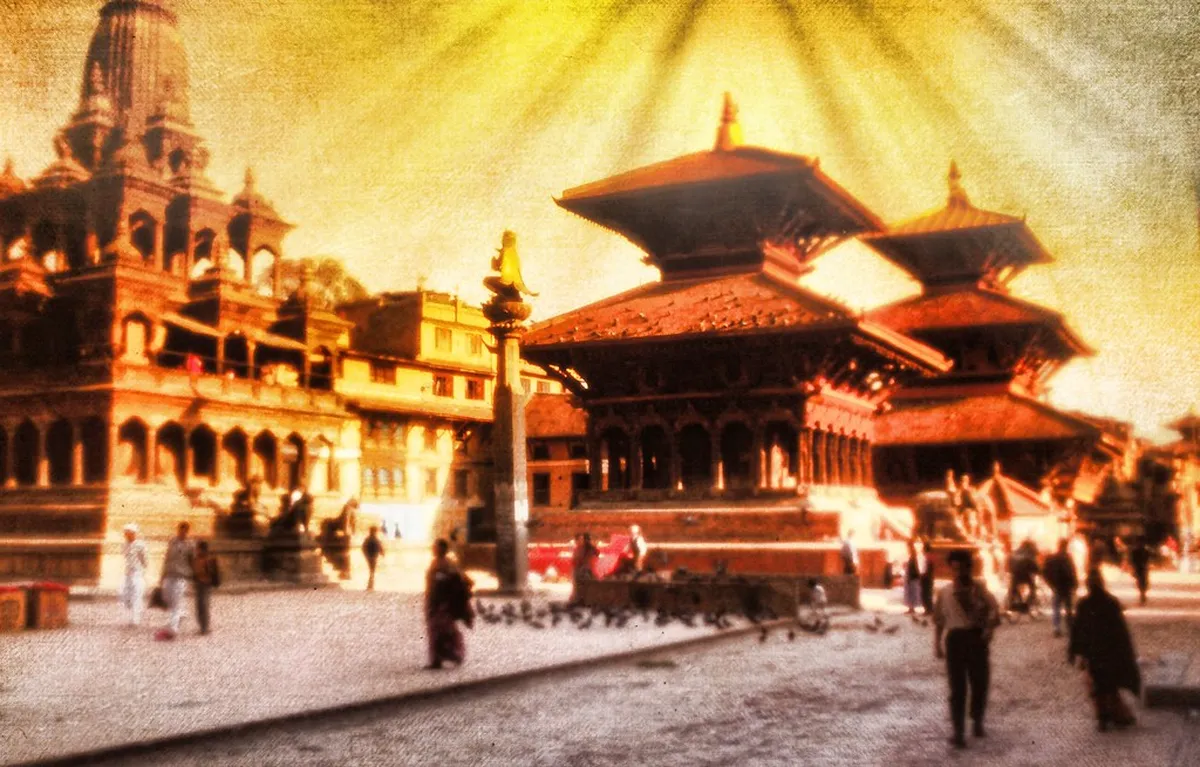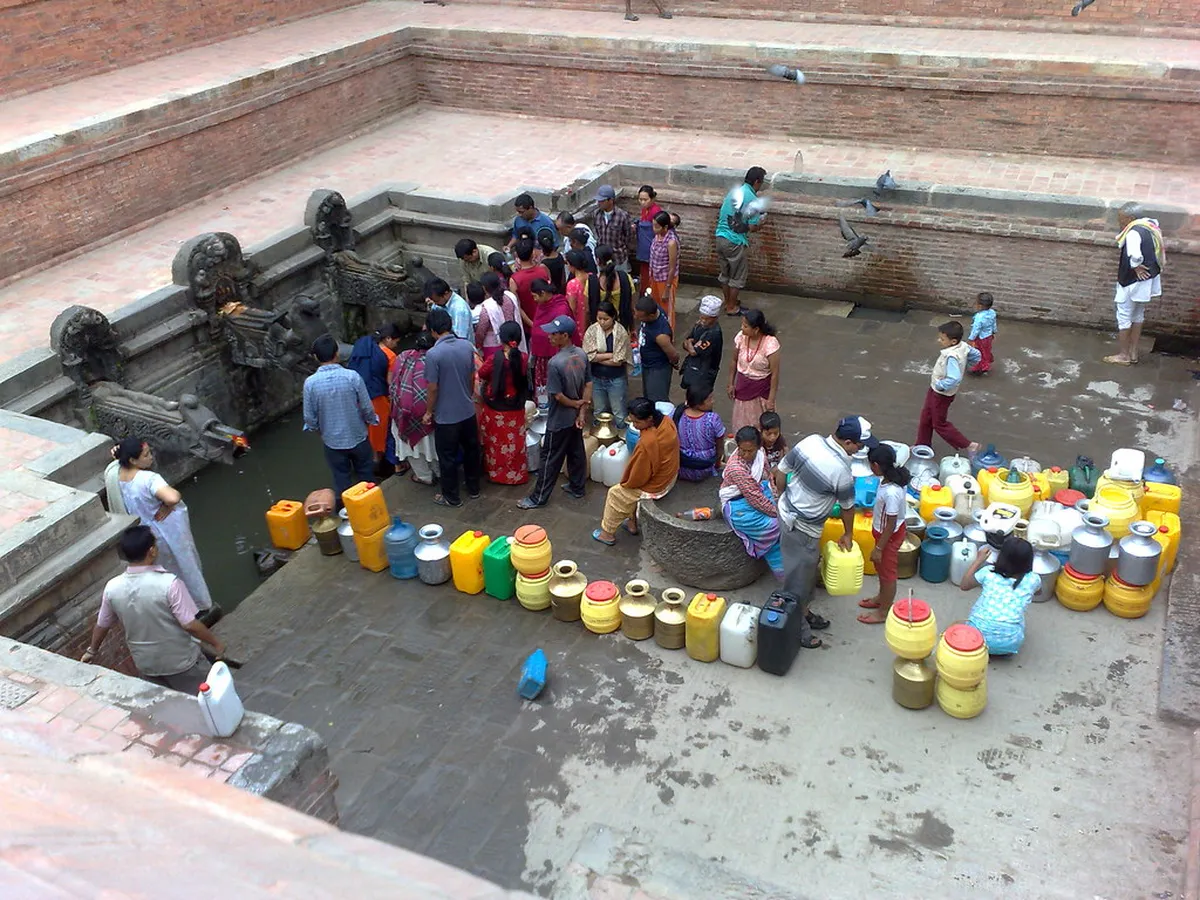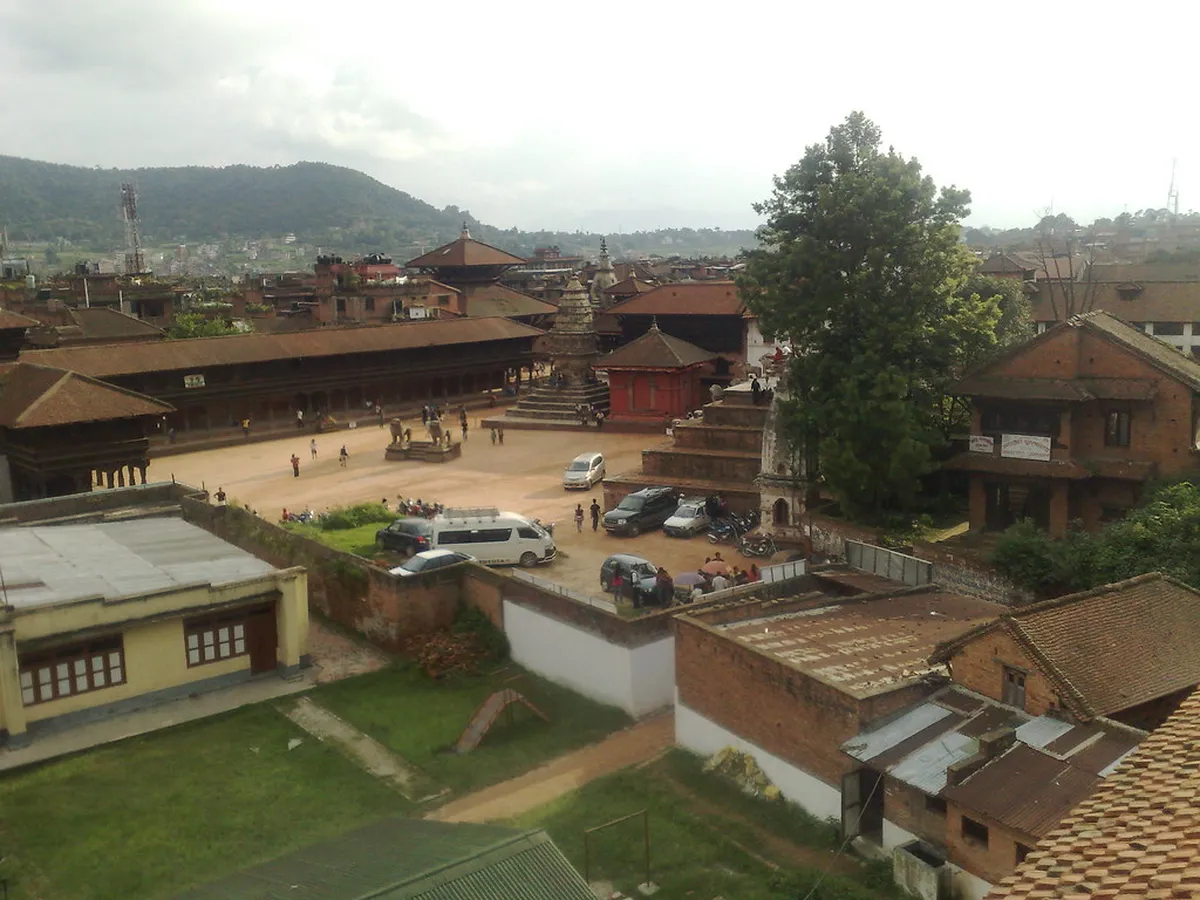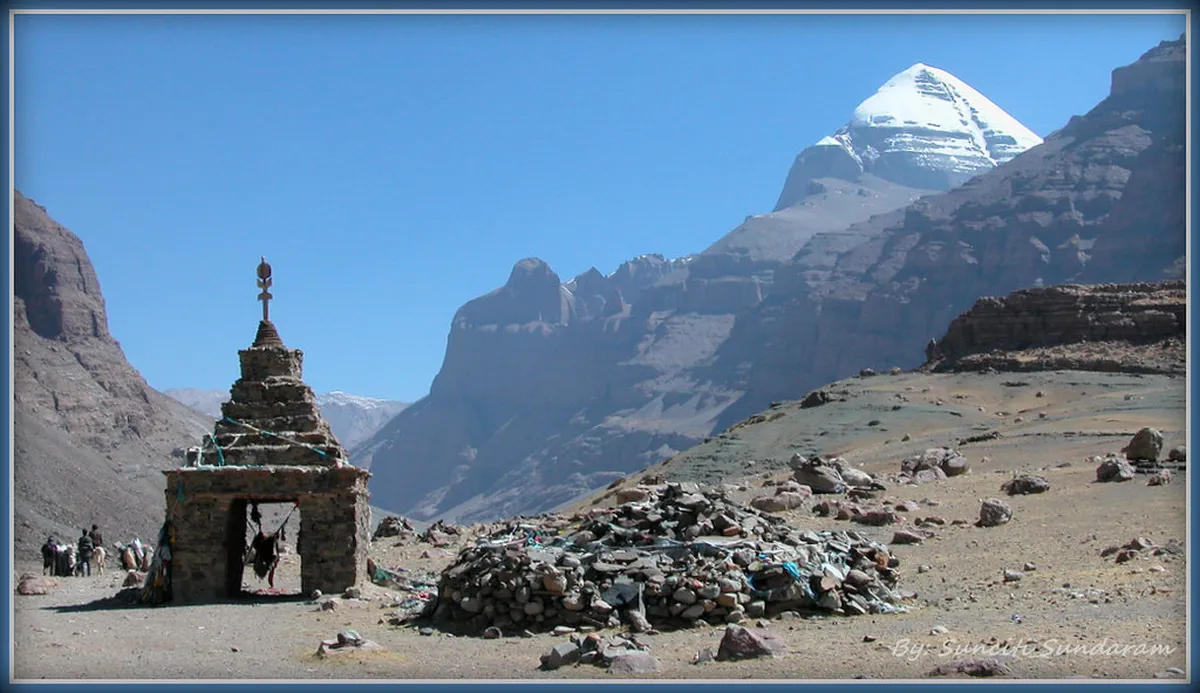
Kathmandu Itinerary: 5 Days of Cultural Richness
Table of Contents
Kathmandu Itinerary: Your Ultimate 5-Day Guide
Kathmandu, the bustling capital of Nepal, is a vibrant tapestry of history, culture, and spirituality. With its ancient temples, UNESCO World Heritage Sites, and scenic views of the Himalayas, a well-planned itinerary ensures you capture the essence of this remarkable city. This Kathmandu itinerary highlights the must-visit attractions, unique Experiences, and practical tips to immerse yourself in the local culture and traditions, making your trip both memorable and enriching.
Want to find the best travel deals for this destination? personalized adventure planner with our adventure planning specialist!
Key Takeaways
- Day 1: Visit Kathmandu Durbar Square, explore Hanuman Dhoka Palace, and discover local cuisine.
- Day 2: Hike to Swayambhunath (Monkey Temple), visit Boudhanath Stupa, and enjoy Tibetan cuisine.
- Day 3: Explore Patan Durbar Square, visit the Museum of Patan, and head to Bhaktapur for ancient architecture.
- Day 4: Trek the Shivapuri National Park for stunning views, or try paragliding for an adventurous day.
- Day 5: Wander through the streets of Thamel, shop for handicrafts, and savor local dishes at popular cafes.
Day 1: Discover the Heart of Kathmandu – Durbar Square
Welcome to Kathmandu, the vibrant capital of Nepal, where history comes alive at Kathmandu Durbar Square. This UNESCO World heritage Site is an essential first stop in your Kathmandu itinerary. Begin your journey by immersing yourself in the rich cultural heritage and bustling atmosphere of Durbar Square, located in the heart of the city.
Your day starts at the iconic Hanuman Dhoka Palace, named after the Hindu deity Hanuman. This historical palace complex served as the royal residence during the Malla kings’ rule and contains numerous courtyards and shrines. Don’t miss the chance to see the intricate architecture and fascinating exhibits within the Museum of the Palace, which narrate the story of Nepal’s monarchy and Culture.
“Kathmandu Durbar Square is a living testament to the artistry and history of Nepal.” – Local Guide
Explore Local Cuisine
After soaking in the history, satisfy your hunger by indulging in local cuisine at one of the many eateries surrounding the square. Try the traditional Dal Bhat (a lentil soup served with rice) or Momo (dumplings) at Bhojan Griha, a well-regarded restaurant that serves authentic Nepali dishes in a beautiful heritage house.
As you relish your meal, take a moment to observe the vibrant street life around you. Street vendors selling everything from colorful prayer flags to local handicrafts add to the dynamic atmosphere of this historical site.
Visit Important Temples

Next, devote some time to visiting the numerous temples scattered throughout Durbar Square. Highlights include Kastamandap Temple, believed to be built from the wood of a single tree, and Kasthamandap – a unique supporter of the square. Each temple tells a story, showcasing the intricate woodwork and stone carvings that are a hallmark of Nepalese artistry.
Evening Activities
As the day winds down, head towards Thamel, the bustling tourist district known for its lively atmosphere and elaborate shops. Enjoy the vibrant Nightlife, where you can enter a local bar or restaurant for traditional music and dancing. Alternatively, consider booking a guided walking tour—it’s a great way to fully appreciate the sights and sounds of Kathmandu after the sun sets.
In summary, Day 1 of your Kathmandu itinerary sets the tone for an unforgettable journey immersed in history, culture, and gastronomy. Remember to carry your camera, as the splendid architecture and street scenes of Kathmandu Durbar Square are truly photogenic!
| Time | Activity | Location |
|---|---|---|
| 9:00 AM | Explore Hanuman Dhoka Palace | Kathmandu Durbar Square |
| 12:00 PM | Lunch at Bhojan Griha | Near Durbar Square |
| 2:00 PM | Visit Kastamandap Temple | Kathmandu Durbar Square |
| 5:00 PM | Explore Thamel | Thamel District |
Day 2: Spiritual Exploration at Swayambhunath and Boudhanath
On your second day of the Kathmandu itinerary, immerse yourself in the spiritual essence of Nepal by visiting two of its most iconic religious sites: Swayambhunath and Boudhanath. These locations not only capture the rich spiritual heritage of the region but also offer breathtaking views and unique cultural Experiences.
Morning: Swayambhunath (Monkey Temple)
Start your day with an early morning hike to Swayambhunath, commonly referred to as the Monkey Temple. This UNESCO World Heritage Site is located atop a hill, providing an excellent panoramic view of Kathmandu Valley.
The hike involves climbing approximately 365 steps, but don’t let that deter you! The journey is adorned with numerous *stupas*, colorful prayer flags, and the notorious monkeys that roam freely. As you ascend, take a moment to appreciate the peaceful atmosphere and stunning views of the city.
“Swayambhunath is not just a temple; it’s a meditative experience that allows you to connect with the vibrant Culture of Kathmandu.”
Once you reach the stupa, spend time observing the intricately designed structure and engaging with the local monks. Don’t forget to spin the prayer wheels as you make your way around the stupa, a common ritual believed to spread blessings and good karma.
Lunch: Tibetan Cuisine

After a spiritually uplifting morning, head to a nearby eatery to indulge in Tibetan cuisine. dishes such as momo (dumplings) and thukpa (noodle soup) are local favorites that provide a perfect fuel for your afternoon explorations.
Afternoon: Boudhanath Stupa
Your next destination is Boudhanath Stupa, one of the largest stupas in Nepal and a significant pilgrimage site for Tibetan Buddhists. Just a short drive from Swayambhunath, this spectacular structure is surrounded by quaint shops and accommodation options, predominantly influenced by Tibetan Culture.
As you approach the stupa, you’ll instantly be captivated by its immense size and the vibrant energy that permeates the area. Make sure to walk around the stupa in a clockwise direction while performing *kora*, a ritualistic circumambulation.
Take time to explore the intricate mandalas and colorful prayer flags fluttering above your head, symbolizing the prayers of the faithful that rise into the heavens. There’s also the chance to enjoy some more delicious Tibetan food, as several restaurants overlooking the stupa offer fantastic views.
Evening: Reflections and Experiences
Conclude your day with a peaceful moment by the stupa during sunset. The changing colors of the sky against the stupa create an enchanting backdrop, perfect for reflection after a day full of exploration.
“The tranquility at Boudhanath during sunset is a soul-soothing experience that encapsulates the essence of Kathmandu.”
As the day winds down, consider grabbing a cup of traditional Nepalese tea while sitting with the locals, allowing the experiences of the day to settle in. Not only will you enjoy the gentle flavors of the tea, but you will also be soaking in the lively ambiance of the area.
Day 2 of your Kathmandu itinerary not only connects you with Nepal’s spiritual roots but also allows you to taste the culinary delights and cultural richness of this incredible region, setting a passionate tone for the days ahead.
Day 3: Cultural Immersion in Patan and Bhaktapur
On your third day of the Kathmandu itinerary, prepare yourself for a rich cultural immersion as you explore two of the Valley’s historical gems: Patan and Bhaktapur. Both of these ancient cities offer unique insights into the rich history and vibrant traditions of Nepal.
Getting to Patan

Begin your journey with a short drive or a local bus ride from Kathmandu to Patan, which lies just across the Bagmati River. The trip takes around 30 minutes and provides a scenic view of the valley. Upon arrival, you will be greeted by iconic temples, intricately carved architecture, and lively local life.
Exploring Patan Durbar Square
Your first stop in Patan should be the Patan Durbar Square, a UNESCO World Heritage Site. The square is surrounded by stunning temples and palaces, including the Hiranya Varna Mahavihar and the Krishna Mandir. The Krishna Mandir, noted for its detailed stone carvings and intricate architecture, is a must-see.
To truly appreciate the artistry, take a moment to observe the local craftsmen practicing traditional skills. Don’t miss visiting the Museum of Patan housed in the former Royal Palace, which showcases an impressive collection of antique statues, inscriptions, and historical artifacts.
Lunch in Patan
After soaking in the sights at Patan Durbar Square, enjoy lunch at a local eatery. You will find many options that serve authentic Nepali dishes. Dal Bhat (lentil soup served with rice) is a local favorite. Alternatively, try momo (dumplings) filled with meat or vegetables—perfect for refueling before heading to your next destination.
Transfer to Bhaktapur

Next, embark on a short journey to Bhaktapur, often considered the best-preserved medieval city in Nepal. The drive takes approximately 30-40 minutes. As you approach Bhaktapur, you’ll notice its stunning skyline dominated by temple spires and traditional Newari architecture.
Uncovering Bhaktapur’s Charm
Upon entering Bhadgaon (another name for Bhaktapur), you will be greeted by the Bhaktapur Durbar Square, another UNESCO World Heritage Site filled with history and culture. Key Highlights include Bhupatindra Malla’s Palace and the renowned 55-Window Palace.
Stroll through the narrow cobblestone streets and marvel at the ancient structures adorned with intricate carvings. Be sure to visit the Pachpade Valley and snack on local specialties, like king curd (juju dhau)—a creamy yogurt that is a must-have in Bhaktapur.
Cultural Experiences and Activities
Take part in a pottery-making demonstration or try your hand at crafting your own piece at one of the many traditional pottery studios. Bhaktapur’s culture is deeply intertwined with its artisanal crafts, and engaging with local artisans can enhance your appreciation for their work.
“Bhaktapur is not just a city, it’s a time capsule, preserving the essence of medieval Nepal.” – Local Artisan
Return to Kathmandu

As the sun sets, make your way back to Kathmandu, reflecting on the vibrant colors and sounds of Patan and Bhaktapur that fill your memory. This day is not just about sightseeing; it’s about embracing the local culture, traditions, and the timeless elegance of these ancient cities.
Day three in your Kathmandu itinerary will leave you enriched with cultural insights, making it a truly unforgettable experience.
Day 4: Nature and Adventure in the Kathmandu Valley
Pro Tip: Book your Kathmandu adventures in advance through Viator for the best deals!
On your fourth day, embrace the natural beauty and adventure that the Kathmandu Valley offers. If you’re looking to escape the bustling city, this day is dedicated to exploring the great outdoors, whether it be through trekking or indulging in thrilling Adventures.
Trekking in Shivapuri National Park
Your day can begin with a trek to Shivapuri National Park. Located just north of Kathmandu, this park is home to diverse flora and fauna, making it a perfect spot for nature lovers. The trek itself is fairly accessible for most fitness levels and offers stunning views of the valley and the neighboring Himalayas.
As you hike along the well-maintained trails, keep an eye out for various bird species, including the colorful Blue Magpie and the Crimson Sunbird, which are often spotted in this region.
“Trekking through Shivapuri offers a unique perspective of nature, away from the hustle and bustle of the city—a true hidden gem.”
Alternative Adventure: Paragliding
If hiking isn’t quite your speed, consider paragliding in the Kathmandu Valley, particularly at Godawari or Patan. This exhilarating adventure offers an unforgettable way to immerse yourself in the beauty of the landscape while gliding through the skies.
From above, the stunning vistas of the valley and the majestic Himalayas will leave you breathless. Flights typically last around 30 minutes, giving you ample time to soak in the panoramic views of the Kathmandu Valley.
| Adventure Option | Duration | Cost (Approx.) | Difficulty Level |
|---|---|---|---|
| Trekking in Shivapuri | 4-6 hours | $10-$20 (entry fee and guide) | Easy to Moderate |
| Paragliding | 30 minutes | $100-$150 | Easy (no experience needed) |
Lunch Break at Local Eateries
After exploring the trails or soaring through the sky, treat yourself to a hearty lunch at one of the local eateries nearby. Nepalese cuisine is famous for its flavor; don’t miss the chance to try Dahl Bhat (lentil soup with rice) or Momo (dumplings), which many travelers rave about.
Afternoon Visit to Chandragiri Hills
In the afternoon, take a cable car ride to Chandragiri Hills, which is approximately 16 kilometers from Kathmandu. The ride itself offers spectacular views, setting the stage for a peaceful visit once you reach the top. At the summit, enjoy panoramic views of the majestic Annapurna and Langtang ranges. This spot is a fantastic location for photographs or simply soaking in the breathtaking scenery.
Ultimately, Day 4 in the Kathmandu itinerary perfectly combines adventure and tranquility, providing a much-needed break from the urban pace. Whether you choose to trek, sky-dive, or simply relax in nature, this day will serve as a highlight of your journey.
Day 5: Local Experiences and Shopping in Thamel
On your final day of the Kathmandu itinerary, immerse yourself in the vibrant culture and lively atmosphere of Thamel, the heart of Kathmandu. This bustling neighborhood is renowned for its narrow streets lined with colorful shops, local eateries, and vibrant energy. Begin your exploration with a hearty breakfast at one of the many cafes that dot the area.
Morning: Savoring Local Flavors
Start your day by trying some traditional Nepalese dishes. Consider visiting a café like The Yellow House or Fresh Up, where you can enjoy dishes like dal bhat or scrumptious momos (dumplings). These eateries provide a welcoming ambiance perfect for indulging in local flavors while enjoying a steaming cup of chai.
Pro Tip: Make sure to try sel roti, a traditional homemade rice-based donut, paired with local yogurt.
Shopping: A Haven for Handicrafts
After breakfast, head out for a shopping spree in Thamel. The streets are filled with shops selling handicrafts, pashmina scarves, Tibetan jewelry, and wood carvings. The vibrant colors, intricate designs, and unique craftsmanship make each purchase special.
Below is a small guide to shop locations:
| Product Type | Recommended Shop | Notable Items |
|---|---|---|
| Pashmina | The Himalayan Pashmina | Scarves, shawls |
| Jewelry | Himalayan Handicrafts | Silver, gemstones |
| Art and Decor | Artisan’s Shop | Thangka paintings, sculptures |
Afternoon: Exploring Local Culture
Post shopping, take a leisurely stroll through the vibrant streets of Thamel. Feel free to explore the eclectic mix of street vendors, musicians, and local artisans showcasing their crafts.
Make your way to the nearby Garden of Dreams, a serene oasis amidst the chaos of the city, where you can relax for a bit and enjoy a light lunch in its beautiful surrounds. This neo-classical garden is perfect for reflecting on your trip and enjoying a moment of tranquility.
Evening: Dining and Nightlife
As the sun sets, savor your last evening in Kathmandu with dinner at one of the vibrant restaurants in Thamel. For an authentic experience, consider visiting Or2k, a local favorite offering delicious Middle Eastern and Nepali dishes. The atmosphere here is casual and lively, often filled with locals and travelers alike.
If you’re in the mood for Nightlife, explore some of Thamel’s bars and live music venues. Enjoy a mix of local tunes and international music to celebrate the culmination of your Kathmandu itinerary with newfound friends.
Remember: Keep your belongings secure as you navigate through the bustling streets of Thamel.
With your heart full of memories and stomach full of wonderful flavors, your Kathmandu adventure concludes. You’ve explored the historic, spiritual, and cultural gems of this enchanting city. Until next time, safe travels!
Best Time to Visit: Seasonal Highlights for Your Kathmandu Itinerary
Tip: Discover the best Kathmandu experiences with Viator Tours!
When planning your Kathmandu itinerary, selecting the right time for your visit can significantly enhance your experience. Each season presents its unique charm, allowing you to explore the majestic capital of Nepal through different lenses. Here’s a detailed breakdown of what to expect throughout the year:
| Season | Months | Highlights |
|---|---|---|
| Spring | March to May | Blooming flowers, clear skies, and popular trekking season. |
| Summer | June to August | Monsoon rains, lush landscapes, and fewer tourists. |
| Autumn | September to November | Ideal trekking conditions, vibrant festivals, and pleasant weather. |
| Winter | December to February | Cool temperatures, potential snowfall in surrounding hills. |
Spring: A Vibrant Awakening
Spring, spanning from March to May, is arguably one of the best times to visit Kathmandu. The city blossoms with an array of flowers, and the temperatures are ideal for both sightseeing and outdoor Activities. This season coincides with several cultural festivals, including Holi, the festival of colors, which you wouldn’t want to miss. Furthermore, it’s a prime time for trekking in the nearby Himalayas, making your Kathmandu itinerary an exciting mix of urban exploration and nature.
Summer: A Lush Retreat
Summer lasts from June to August and is characterized by monsoon rains. Although this season may deter some visitors, it offers unique benefits. The landscapes transform into lush greenery, and the tourist crowds thin out, which often means lower prices for accommodation. Travelers who don’t mind the rains can take advantage of fewer crowds and enjoy a peaceful experience as the temples and local markets exhibit a vibrant charm during this time.
Autumn: The Magical Season
Autumn, covering September to November, is perhaps the pinnacle of the travel season in Nepal. With clear skies, mild weather, and the bright hues of festivals like Dashain and Tihar, this season offers a festive atmosphere like no other. This is also the prime trekking season, ideal for those looking to explore the various trekking routes surrounding the city. A well-planned Kathmandu itinerary during this time can include visits to nearby popular trails, such as the Annapurna Circuit.
Winter: A Tranquil Escape
Winter, from December to February, sees temperatures drop, especially in the mountains. While the city can get chilly, this season offers fewer tourists, allowing for a more intimate experience with the local culture and sights. The serenity of the city during winter can be quite captivating. For those interested in high-altitude sports, this is also the time to explore the snow-clad mountains surrounding Kathmandu.
Travel Tip: Regardless of the season you choose, be prepared for sudden weather changes. Layering your clothing and having waterproof gear can enhance your comfort during your trip.
Ultimately, the best time to visit Kathmandu depends on your priorities. Whether you’re ready to embrace the bustling crowds during autumn or enjoy the tranquility of winter, each season offers a unique perspective on this enchanting city.
Travel Tips for Your Kathmandu Itinerary: Transportation, Costs, and Safety
Pro Tip: Book your Kathmandu adventures in advance through Viator for the best deals!
Planning a trip to Kathmandu can be exhilarating yet challenging. With its vibrant culture, stunning historical sites, and diverse experiences, it’s essential to prepare adequately for a smooth journey. Here are vital tips regarding transportation, costs, and safety that will enhance your Kathmandu itinerary.
Transportation in Kathmandu
Getting around Kathmandu is relatively straightforward, but it’s important to choose the right mode of transport based on your needs:
- Taxis: Widely available, taxis are the most convenient option for tourists. Always agree on a fare before heading to your destination, as many drivers do not use meters.
- Local Buses: For an authentic local experience, use the bus system. However, be prepared for crowded conditions and limited English signage.
- Cycle Rickshaws: Ideal for short distances, cycle rickshaws are eco-friendly and offer a leisurely way to explore the city.
- Private Car Rentals: For greater comfort and convenience, consider hiring a private car and driver, especially for day trips outside the city.
Costs of Traveling in Kathmandu
Kathmandu is known for being an affordable travel destination. However, understanding typical costs can help you manage your budget effectively. Below is a summary of daily expenses you might encounter during your stay:
| Expense Type | Estimated Cost (in NPR) | Notes |
|---|---|---|
| Accommodation (Budget) | 1,500 – 3,000 | In guesthouses or hostels |
| meals (Local Restaurants) | 300 – 800 | Try local dishes for authenticity |
| Transport (Taxi within the city) | 300 – 1,000 | Depends on the distance traveled |
| Entry Fees for attractions | 500 – 2,000 | For sites like Durbar Square & temples |
Safety Tips in Kathmandu
While Kathmandu is generally safe for tourists, it’s wise to take precautions. Here are some essential safety tips:
- Stay Aware: Always keep an eye on your belongings, as petty theft can occur in crowded areas.
- Health Precautions: Drink bottled or filtered water to avoid waterborne diseases. Also, be cautious when eating street food.
- Emergency Contacts: Familiarize yourself with local emergency numbers and have a plan in case of medical emergencies.
- Respect Local customs: Be mindful of local traditions and cultural norms, especially when visiting religious sites.
“Traveling in Kathmandu is not just a journey; it’s an experience that immerses you in the depths of culture, history, and spirituality.”
By keeping these transportation, cost, and safety tips in mind, you’ll be well-prepared to fully enjoy your Kathmandu itinerary. Embrace the culture, savor the cuisine, and explore the stunning landscapes that make Kathmandu a timeless destination!
This 5-day Kathmandu itinerary guides you through a captivating journey filled with rich history, spiritual Landmarks, and stunning landscapes. With an array of activities and cultural experiences, Kathmandu offers a unique travel experience for every traveler. Start planning your Kathmandu itinerary today and create unforgettable memories in the heart of Nepal!
Frequently Asked Questions
A: The best time to visit Kathmandu is during the spring (March to May) and autumn (September to November) for mild weather and clear skies.
A: A 5-day itinerary is perfect for soaking in the culture, exploring key attractions, and taking in the local lifestyle.
A: The Swayambhunath Stupa, Kathmandu Durbar Square, Boudhanath, and Patan are unmissable.
A: Kathmandu offers various transport options including taxis, local buses, and biking, making it easy to navigate.
A: Yes, consider day trips to Nagarkot for sunrise views or Dhulikhel for hiking and cultural experiences.
A: Visit local markets like Asan, join a cooking class, or participate in a traditional Nepali festival.